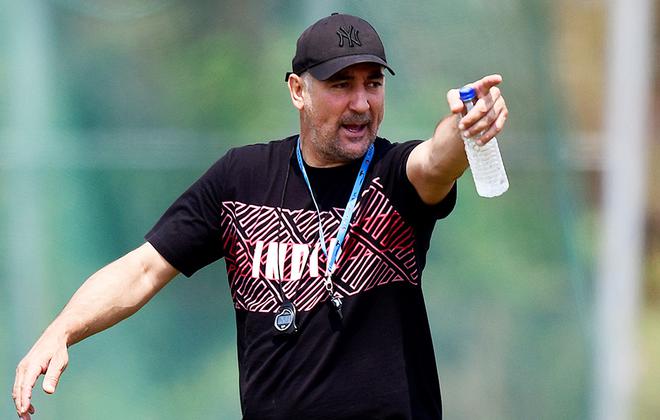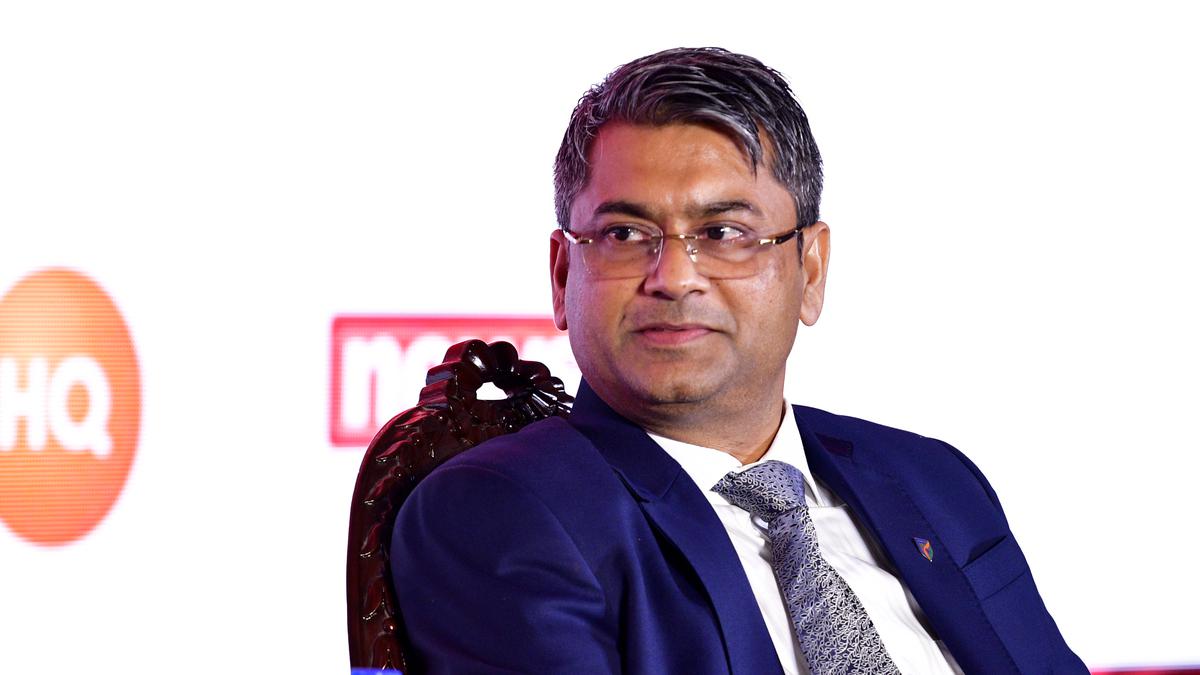When Kalyan Chaubey took charge as the president of the All India Football Federation (AIFF) in September 2022, one of the biggest changes that came about under the new administration was the dissolution of the Indian Arrows project.
The team that nurtured the current stars of the Indian National team, such as Gurpreet Singh Sandhu, Anwar Ali and Manvir Singh, was done away with a nebulous future ahead for the next generation of Indian football.
In an exclusive interview with Sportstar, Chaubey shed some light on the counter-policy by the AIFF to ensure that the sport continues to flourish in the country under the new regime.
“We are trying our best to take Indian football to a level at par with global standards. You cannot see an overnight change in such cases or even an immediate improvement in the FIFA Ranking.
“In terms of giving them an opportunity, facility, exposure and infrastructure, the Federation is trying its level best,” he said.
“Both the teams, men and women, are going for exposure trips, especially the under-17 and under-20 teams. There is an exposure trip coming up in Spain, at Atletico Madrid. They will train there for five weeks.
There will be a proper evaluation of their match-reading techniques, tactics, and strategy. They will be given individual evaluation reports. Thereafter the teams will go for a two-week training in Germany.”
What is precisely the change here then?
The major difference between the two models is the way the two paths operate. The Indian Arrows primarily played within the Indian football circuit as a unit and the improvement of talent was an indigenous process, within that unit.
The new policy, on the other hand, focuses on increasing competition with a larger number of tournaments, a longer football calendar and creating a greater pool of Indian footballers.
“We are focusing more on tournaments that used to be reputed in the past, say the Santosh Trophy, the Merdeka Cup, the Stafford Cup in Bengaluru, the Bordoloi Trophy, the Kalinga Tournament (coming up in Odisha), Durand Cup (is doing well), the IFA Shield (is one that we intend to organise better),” Chaubey said.
While the announcement of the I-League and the Indian Super League working in a promotion-relegation model was done before they arrived, the new administration will be the ones kicking off the Super Cup in Kerala next month, after four years.
“Initially, the target is good governance — to have qualified human resources, a larger talent pool, a larger scouting system, better competition structure, good referees to officiate the matches, and broadcasting of matches so that the match can be seen by the maximum number of people and to have a better revenue model that can be self-sustainable,” he added.

Boss man: Igor Stimac during a practice session with the Indian national football team.
| Photo Credit: RITU RAJ KONWAR
‘The more your player goes overseas, they develop confidence’
India won the Tri-Nations Cup by beating higher-ranked Kyrgyzstan at the Khuman Lampak Stadium, Manipur, as it prepares for the AFC Asian Cup in Qatar next year.
Travelling for high-profile tournaments is another step in the opposite direction to the previous administration as Chaubey & Co. have made it very clear that India will look to develop grassroots rather than just hosting tournaments.
“The more your players goes overseas, the more confidence they develop,” he said. “We have talked to FIFA about taking help from Arsene Wenger and we also spoke about how we can take our local competitions to match global standards.”
In December last year, the AIFF withdrew its bid to host the AFC Asian Cup in 2027 before shifting the Santosh Trophy’s last four games (semifinals, third-place game and final) to Riyadh, Saudi Arabia.
“You must be aware that before the Santosh Trophy, president Infantino himself had sent a personal message to Indian football fans around the world voicing FIFA’s support towards the tournament,” he said.
Having beaten Myanmar (ranked 159) and Kyrgyzstan (ranked 95), India climbed four spots to 101 in the FIFA rankings. The president added that the Blue Tigers will continue to play more matches against countries “where the level of football is equal or relatively close to that of ours”.
Chaubey also hinted that there is a chance for a team outside the South-Asia region to participate in the SAFF Cup, but the name is not finalised yet.
“You’ll see (that in) the SAFF Cup in June, we are trying to invite a team outside the SAFF region so that it does not get predictable,” he said.
Chance of having VAR in Indian football
Chaubey praised the success of the ISL in terms of developing young footballers and said that it has contributed significantly to boosting the confidence of Indian players.
“If you see the body language of Indian players now with foreign players, you feel they are completely equal,” he said. “I was fortunate enough to be in the (ISL) final in Goa. I saw the match and saw very good goalkeeping. So, I feel ISL has delivered (quality) and has the potential to deliver more.”
The AIFF, in January 2023, announced its first batch of elite match officials (referees and assistant referees) who were offered full-time contracts.
And after the refereeing controversy in the Kerala Blasters vs Bengaluru FC ISL playoff, the president stressed that officiating will be given more importance in matches.
“We spoke about several things with 15 FIFA officials and president Gianni Infantino. We have spoken about how we can bring VAR to India, VAR Lite on a reasonable budget.
There have been discussions about how to improve our refereeing standards, educate our coaches, get better coaching instructors and improve our scouting system,” he said.
A new day, a new start
Praful Patel, the former AIFF president, and Chaubey, the current president, have some interesting similarities despite implementing different policies after taking charge.
In 2009, under Patel, India was to play the AFC Asian Cup in Qatar two years later. Chaubey, too, took charge in 2022 with India set to playe in the continental competition in the same country in 2024.
“Asia Cup is our main area (of focus) and I hope we do well. I have full faith and confidence in the national team’s chief coach’s ability and I’m sure he will deliver for India,” said Chaubey.
Also, during Patel’s tenure, it was Indian football legend Bhaichung Bhutia nearing the sunset of his career; and now for Chaubey, it is Sunil Chhetri, the country’s highest goal scorer and another legend in his own right.
While a player like Chhetri satiated India’s thirst for a striker for 15 odd years, finding a replacement for him would be one of the most important things in this administration’s bucket list.
More competitions, a longer calendar and exposure trips all sound extremely promising on paper but only after execution can it be seen if achhe din can actually arrive in Indian football, especially after the gloom of a FIFA suspension, which was followed by a quickfire election.
But for that, all the country can do is wait.


